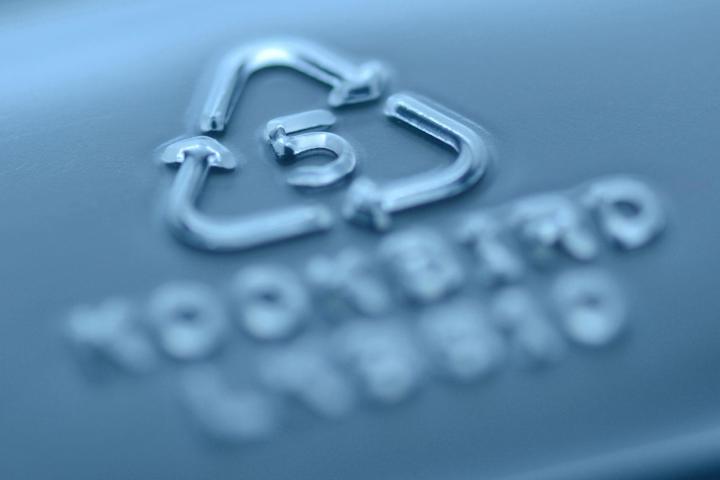
When you’ve drained the last drop out of the laundry detergent bottle or squeezed out the rest of the shampoo, you might flip over the container and see a little triangle of arrows with a number inside. The symbols are meant to signify what type of resin plastic the container is made of, so consumers know whether or not they can recycle them. The Society of the Plastics Industry introduced the system, known as the Resin Identification Code (RIC) system, in 1988, and it’s become a universal standard.
Still, a lot of people — if they recycle at all — just see plastic and toss it in the blue bin. The problem is that whether a recycler accepts the container is totally dependent on where you’re located. The L.A. Times has a “Can I Recycle …” feature that provides a great example using take-out cups, and it’s easy to see why there’s so much confusion around what should and shouldn’t go in those bins. Such cups can either be plastic or paper coated with polyethylene. Los Angeles recycles only the fully plastic cups. Arcadia recycles both kinds, but Santa Barbara won’t do either. Pasadena will recycle a plastic cup if it has a number.
To get more guidance on what you can and can’t recycle, you’ll need to get in touch with your local facility, but we can at least help decode the RIC system, thanks to the American Chemistry Council.
1. Polyethylene Terephthalate (PET, PETE)

Thanks to its properties that help the clear, tough resin block gas and moisture, PET is used in soda, juice, and sports drink bottles. Mouthwash containers, peanut bar jars, and microwavable food trays are often made from this resin too. It’s recycled into fleece jackets, tote bags, and comforter filling.
2. High-Density Polyethylene (HDPE)

A stiffer resin than PET, HDPE also makes up a lot of bottles, though usually ones that require chemical resistance, like detergents and bleach. Cosmetics and shampoos also often come in HDPE containers. Recycling uses include new non-food containers (so it could’ve been a conditioner container in its previous and current life), as well as plastic deck material.
3. Polyvinyl Chloride (PVC, Vinyl)

PVC is physically stable and chemically resistant and can be either rigid or flexible. You’ll find it in diverse products from deli wrap and blood bags to window frames, pipes, and siding. Your garden hose and gutters, as well as traffic cones, could be made out of recycled PVC.
4. Low-Density Polyethylene (LDPE)

Because it’s tough yet flexible, LDPE is used in some flexible lids and bottles, as well as in bags for dry cleaning, produce, newspapers, bread, frozen foods, and garbage. Honey and mustard (and, presumably, honey mustard) come in LDPE containers. In a meta twist, garbage and compost cans are made from recycled LDPE.
5. Polypropylene (PP)

Yogurt, margarine, medicine, and syrup containers are all made from PP, but its high melting point makes it a popular choice for takeout, too. The recycled version is used in automotive accessories (brushes and ice scrapers), as well as garden rakes, storage bins, and shipping pallets.
6. Polystyrene (PS)

Brittle and with a low melting point, PS is made into cups, plates, bowls, plasticware, and meat trays, while its “foamed” version is used to protect furniture or electronics, and is also made into packing peanuts. Around the house, you’ll find recycled PS in thermal insulation, light switch plates, vents, and rulers.



